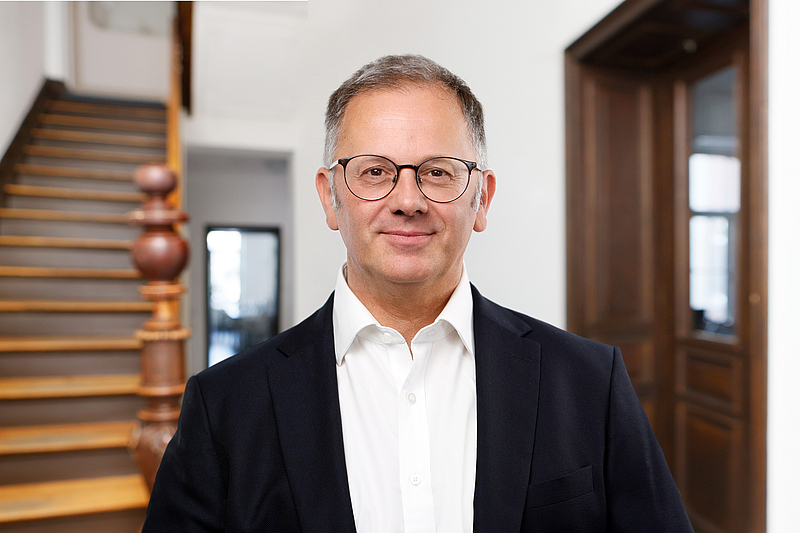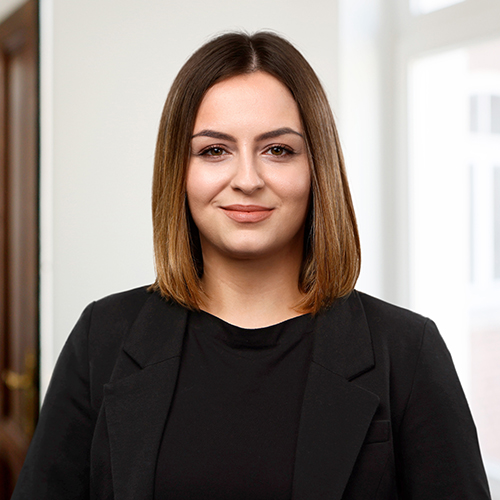The MAX trading system for electronic securities trading is based on state-of-the-art technology and can be customised as a modular system with a wide range of functions.
In this interview, Lucas Fowler, Head of Software Engineering at MACD, talks in detail about the technologies and advantages of MAX and gives an insight into what further developments are planned for the future.

How did the trading system MAX come about?
Lucas: When MACD and OARIS merged in 2017, we quickly realised that the two trading systems GLOX and XKYTE should be replaced by a joint system. It is more efficient for internal processes if everyone works on one system. We also wanted to create a clear architecture and structure that all of our developers could easily navigate. Our shared expertise should be concentrated in a single system. This allows us as a team to respond much better to our customers' wishes and further increase the quality of our products.
The two original systems have advantages and disadvantages compared to each other. The challenge was to develop a single system from them that combines the advantages of both. The result was MAX - the best of both worlds.
How is MAX structured? What technologies is the software based on?
Lucas: The Market GUI of MAX is based on standard Windows technology such as ".NET", a technology with a future that is now platform-independent. As the vast majority of our customers work with Windows, this is easier to integrate into their infrastructure. The Software-as-a-Service model (SaaS model for short) is also at the centre of MAX's activities. One of the advantages of this is that software updates are carried out continuously and automatically (continuous delivery), which is much faster and, above all, less risky than manual execution. With our SaaS model, all update steps are logged and repeatable. This is very helpful as systems are updated frequently and we can therefore track every single step.
How has MAX developed since its launch in 2019? What special features and advantages does the trading system offer?
Lucas: In the meantime, we have been able to implement a large number of further developments.
Several new asset classes have been added. For example, MAX can be used not only for shares, bonds, Exchange Traded Derivatives (ETDs) or funds, but also for FX transactions. A lot has also happened in terms of interfaces: in addition to FIX, the SWIFT 20022 format is now also available for external transactions and a REST interface is now also available, which is also being continuously expanded. We are also increasingly working with Docker and want to utilise the advantages such as containerisation.
With the "Customer Centric View" (CC View) overview tool, we have developed an information system that provides an overview of all our customers and their entire configuration. For example, we can see which bank connection the customer has, which features they have ordered, which brokers they have, whether the hosting is provided by us or externally and so on. This is very useful for us, as it allows us to respond even better to customer requests and concerns and to keep a close eye on all connections.
We now offer Business Oriented Testing (BOT) for MAX customers. This involves simulating realistic test scenarios (e.g. for handling the phases of the trading process) and executing them automatically, which is faster, more efficient and less risky than manual testing. It also reduces the burden on customer banks, as lengthy test sessions with third parties no longer need to be organised.
What is MACD currently working on in relation to MAX and what else is planned for the future?
Lucas: Among other things, we will introduce the Client Launcher, which will allow MAX traders quick access to the latest version of the Market GUI in the same way that traders previously using GLOX have been used to. The project with our pilot customer will start soon.
We also want to optimise the framework libraries for the market GUI, for example .NET, C1 and Java. We always endeavour to use the latest versions of our frameworks in order to be able to carry out automatic deployment and testing according to the latest standards.
By setting up the new data centre as well as virtualisation and containerisation, we are creating a future-proof technology basis. Containerisation in particular makes the systems more robust and the software components much smaller and less resource-intensive. Containerisation also enables us to integrate the services more easily into our customers' existing infrastructures. We are also working on simplifying software deliveries, e.g. in the area of GUIs with our launcher, which allows the software to be rolled out in an automated and controlled manner.
MAX's future-proof technology gives us the opportunity to continuously develop new, customised solutions. And that is our overarching goal: to offer high-quality software that meets the requirements of our customers.
More Blog PostsMore about MACD


